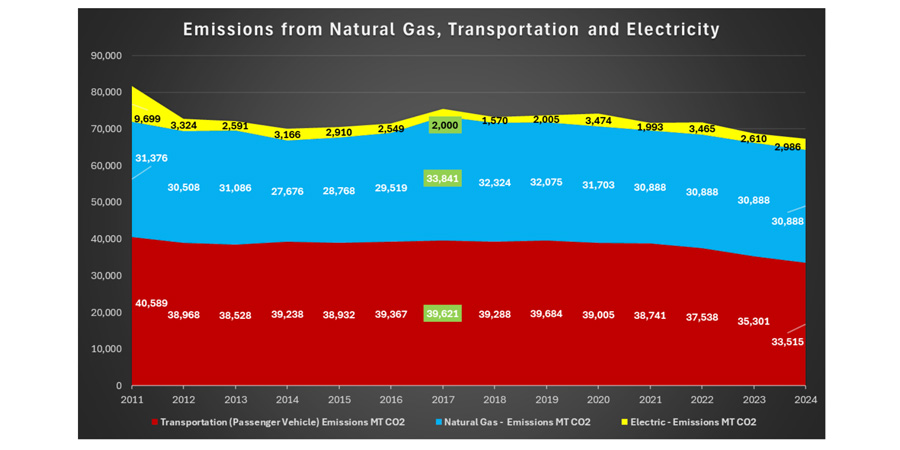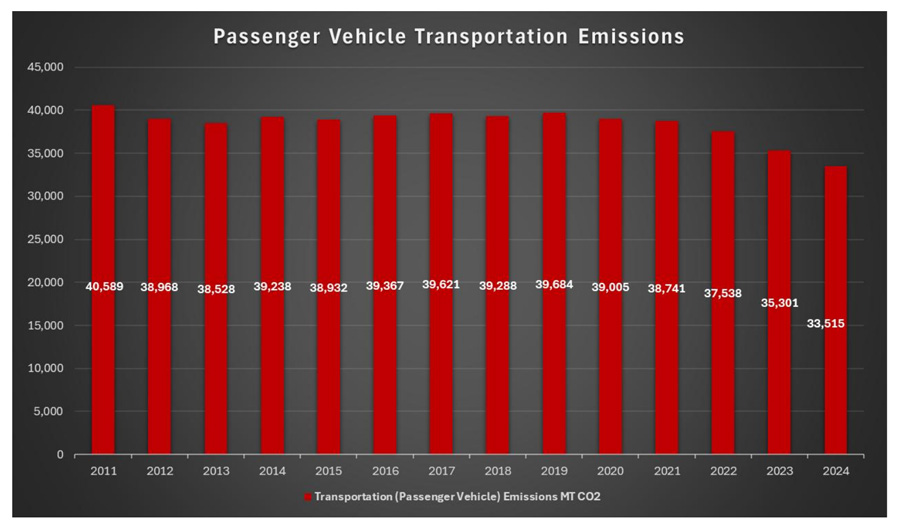City expands incentives to help residents cut emissions and adopt clean energy technologies
By Damian Mann for Ashland.news
Bigger rebates are now available for Ashland residents hoping to switch to electrical heating systems, hot-water heaters or upgrading an electric panel.
The Ashland City Council approved the higher rebates Oct. 23 as part of a climate package that shows the city’s growing adoption of solar panels and electric vehicles.
As part of the rebate program, households that earn up to 200% of the poverty limit, or about $64,00 for a family of four, can get additional financial help.
The more expansive incentive program is part of the Climate and Energy Action Plan 2025, which was first adopted in 2017, to help residents switch to more energy efficient heating and air conditioning system or other efforts to reduce greenhouse gases.
The newly adopted plan shows improvement on many fronts to meet the 2050 target of reducing greenhouse gas emissions by 100%.
The goal is to decrease the emissions by 8% annually on average.
“We are great at adoption of EVs (electric vehicles) in the city of Ashland,” said Chad Woodward, climate and energy analyst for the Ashland Electric Department.

The number of battery electric vehicles, known as BEVs, has increased from 80 vehicles in 2018 to 648 in 2024, according to a city analysis.
Solar panels provided 1,142,297 watts in 2018 and in 2024 it’s 6,583,695 watts.
Even though the trend shows solar panel installation has increased, Woodward said, “We do need to increase our solar production.”
The city has made strides in things it has the ability to target, such as reducing natural gas, increasing electric vehicles and updating heating systems to electricity, while also installing more solar panels.
“The focus is on what we can control,” Councilor Bob Kaplan said.

The city will focus on three primary goals for reducing greenhouse emissions from natural gas, transportation and electricity.
The largest of these three emissions sources is transportation, which pumps 33,515 metric tons of carbon dioxide or methane annually into the atmosphere, followed by natural gas at 30,888 metric tons and electricity at 2,768 metric tons.
A secondary list of sources that produce greenhouse emissions include solid waste, heating fuels, refrigerants or small engines.
However, other emissions sources are more difficult to target.
These include air travel, estimated to produce 14,350 metric tons annually, and household foods and goods, which generate an estimated 173,028 metric tons.The total amount of metric tons of emissions produced in Ashland annually is estimated at 275,289 metric tons.
Emissions from natural gas, electricity and transportation have been edging downward since 2020, according to city estimates.
However, Avista, the company that provides natural gas to Ashland, hasn’t released consumption reports since 2020 despite repeated requests for the data to help monitor progress, according to Woodward.
The new incentives are currently available and residents as well as tenants can apply by going to ashlandoregon.gov/579/Rebates-Incentives.
For forced air heat pumps, the city increased the incentive by $600 to $1,500. Incentives for mini-split heat pumps are $900, a $400 increase.
Heat pump water heater incentives are $1,400, an $800 increase.

For qualifying low-income families, the incentives are double those amounts. The type of heat pump being installed also has to meet energy requirements to qualify for the incentives.
On many older homes, the electric panel isn’t designed to meet the power needs for these types of equipment.
As a result the city has a new electrical panel incentive that provides $600 for a circuit upgrade if a new panel isn’t needed.
A $1,000 incentive is available for a new panel upgrade, or the incentive can cover up to 50% of the cost.
For income-qualified residents, the city could cover up to 100% of the cost to upgrade the panel.
Other incentive programs are remaining the same, such as $1,000 for an electric vehicle or double that for low-income families.
Woodward said the city hasn’t previously run out of money to fund the program, and he hopes more residents send in applications..
“I hope it’s a problem we have,” he said.
Woodward said its also possible to shift money from one incentive program to another to keep up with demand.
Reach freelance writer Damian Mann at dmannnews@gmail.com.




















